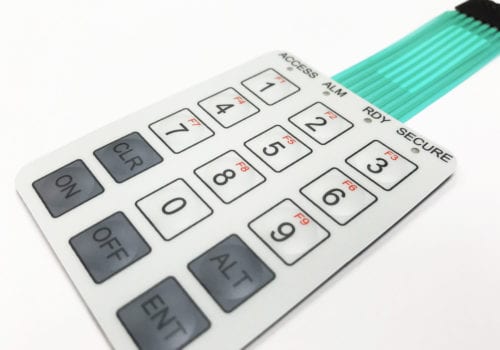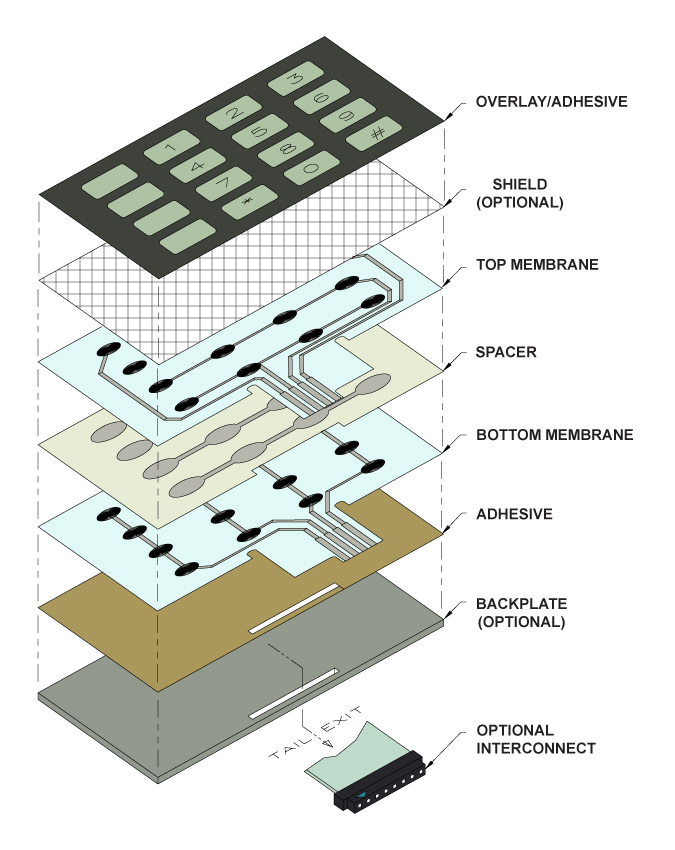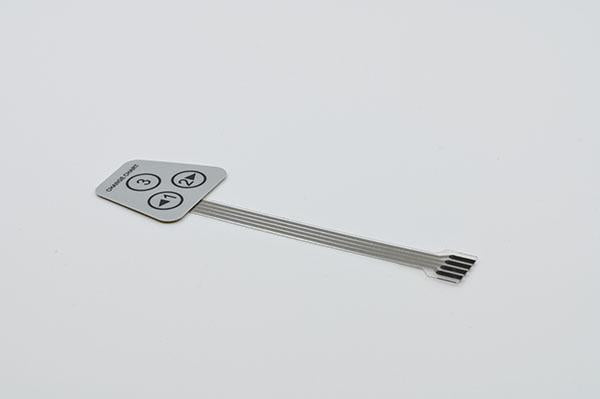Membrane Switch Technology: The Trick to Reputable and Affordable User Interfaces
Membrane switch technology has actually arised as a critical component in the layout of individual interfaces, offering both dependability and cost-effectiveness throughout a diverse series of applications. Its durable building guarantees resistance to environmental difficulties, while the versatility in layout allows for tailored remedies that meet specific industry demands. As we explore the diverse benefits of membrane layer buttons, their capacity for development elevates concerns regarding future applications and advancing patterns. What does the next chapter hold for this innovation in a progressively electronic landscape?
Comprehending Membrane Switch Technology
Membrane button technology is a commonly utilized interface option in different electronic devices, using a smooth mix of capability and design. This modern technology includes several layers of products, generally containing a graphic overlay, spacer layer, and a circuit layer. The visuals overlay displays the interface elements, while the spacer layer divides the circuit layer from the overlay until a user activates a button.
When stress is applied to the overlay, the circuit layer completes the electric circuit, sending out a signal to the tool. This mechanism enables for different setups, consisting of responsive feedback and backlighting options, enhancing user interaction. Membrane layer buttons are usually produced making use of sturdy materials such as polyester or polycarbonate, ensuring longevity and resistance to environmental factors like moisture and dirt.
The convenience of membrane changes enables their application in varied markets, consisting of clinical tools, consumer electronics, and industrial controls. Their small design permits for assimilation right into space-constrained environments, offering an effective interface without endangering aesthetic appeal. Comprehending the intricacies of membrane switch technology is vital for manufacturers and developers seeking to produce dependable and effective human-machine interfaces.
Trick Benefits of Membrane Layer Switches
While numerous user interface remedies exist, membrane layer switches over deal unique advantages that make them a favored option in many applications. One of the key advantages is their durability; membrane layer switches are designed to stand up to rough environmental problems, consisting of moisture, dirt, and temperature variations, guaranteeing resilient performance. This strength considerably minimizes the requirement for constant substitutes, thereby reducing total maintenance expenses.

In addition, membrane buttons are lightweight and small, making them appropriate for applications where space is restricted. Their low-profile design adds to a sleek appearance without endangering performance.
Cost-effectiveness is also a significant advantage, as the production process for membrane switches often tends to be more economical compared to typical mechanical switches. This price, incorporated with their dependability and simplicity of setup, placements membrane layer changes as a practical remedy for a vast array of sectors looking for efficient and reliable interface.
Applications Across Various Industries
Just how do membrane switches adapt to the varied requirements of different sectors? Membrane layer switch technology is increasingly identified for its convenience, making it suitable for a large range of applications throughout multiple sectors.
In customer electronics, membrane buttons give a compact service for remotes and home devices, enhancing customer experience via instinctive design. Additionally, the commercial industry leverages membrane switches for machinery control board, taking advantage of their resistance to extreme atmospheres, such as dampness and dirt.
Army and aerospace applications likewise utilize membrane buttons for their integrity and capability to stand up to extreme problems, making sure functional efficiency in crucial scenarios. The food and drink market adopts these buttons for automated systems, where cleanliness and ease of operation are critical (membrane switch). Inevitably, membrane switches are tailored to satisfy the one-of-a-kind needs of each sector, confirming their necessary function in modern technology user interfaces
Design and Modification Options

In the world of membrane layer switch technology, style and personalization options play a here are the findings critical function in enhancing capability and individual interaction. These switches can be customized to meet certain operational needs and visual choices, making them flexible components in different applications.
One of the primary modification alternatives is the format of the button itself, which can be developed to fit distinct interface and ergonomic factors to consider. By changing the form, size, and setup of buttons, producers can develop instinctive styles that promote convenience of use. Additionally, the consolidation of various colors and graphic overlays permits for branding and boosted exposure, ensuring that read this article individuals can quickly identify functions.
Moreover, membrane buttons can be crafted with various responsive feedback systems, such as raised switches or audible clicks, to boost the individual experience. Various materials can also be picked for longevity and ecological resistance, resolving factors such as moisture, temperature level variations, and chemical exposure.
Ultimately, the substantial design and customization options available in membrane layer switch modern technology equip businesses to create tailored options that not only fulfill practical demands yet additionally align with their branding and operational needs.

Future Fads in Membrane Buttons
As membrane layer button innovation remains to develop, future patterns are increasingly concentrated on improving individual experience and incorporating sophisticated capabilities. One substantial fad is the combination of touch-sensitive and capacitive innovations into standard membrane layer buttons. This growth enables even more instinctive user interfaces, providing tactile comments while keeping a smooth design.
One more emerging trend is using environmentally pleasant materials, driven by the expanding need for lasting manufacturing methods. Producers are seeking to decrease their carbon impact by making use of recyclable substrates and low-impact inks, lining up with worldwide sustainability goals.
In addition, the increase of the Web of Points (IoT) is prompting the unification of wise functions right into membrane layer switches. Boosted connection choices will certainly enable devices to interact with each various other, permitting site link seamless assimilation right into broader systems.
Furthermore, developments in printing modern technologies, such as electronic printing, are permitting greater style flexibility and modification. This allows producers to generate complex layouts and vivid colors cost-effectively.

Final Thought
In final thought, membrane layer switch innovation stands for a vital innovation in user interface design, providing substantial benefits in resilience, personalization, and cost-effectiveness. As innovations continue to emerge, specifically in touch-sensitive interfaces and sustainable materials, the potential for membrane switches over to boost individual experience and capability stays promising.